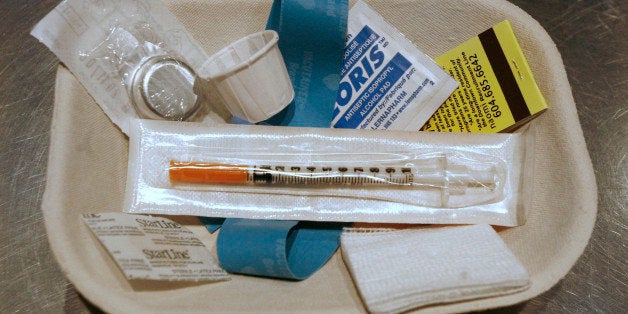
There is an overdose crisis in the United States. More people are now dying from overdose deaths than from car accidents. Overdose has become an issue that is being talked about at all levels of government and just last week President Obama launched a major initiative to address addiction and overdose.
Many of the harm reduction practices that advocates have pushed for years are starting to be embraced by the Drug Czar and elected officials in both red and blue states. Many states have passed laws to expand access to naloxone, the overdose reversal drug. And many states have passed "911 Good Samaritan" laws that allow people who are witnessing an overdose to call 911 for help without fear of arrest. Politicians are calling for increased treatment funding, while obstacles to opioid replacement therapies like methadone are being removed.
But there is one life-saving strategy - supervised injection facilities - that have been implemented in dozens of cities all around the world, but nowhere in the United States. Sixty-six cities in nine countries have supervised injection facilities where people can inject their drugs in a clean, safe place with medical professionals on hand.
Hundreds of evidence-based, peer-reviewed studies have proven that supervised injection facilities practically eliminate overdose deaths, do not encourage additional drug use, provide an entry to treatment, reduce risky injecting and transmission of infectious diseases, including HIV and hepatitis C, improve public order by reducing discarded syringes and public injecting, reduce crime, and are cost-effective.
Given these incredible results, it's remarkable that there's not one city in the U.S. that uses this life-saving strategy. But with overdoses devastating families and communities, multiple cities and states are looking into SIF's as the next frontier of harm-reduction.
In February, Maryland Delegate Dan Morhaim made national news when he proposed groundbreaking legislation to deal with his state's overdose crisis and mass incarceration disaster. His legislation included: treatment-on-demand, decriminalizing drug use and possession, supervised injection facilities, and heroin maintenance. His legislation received favorable coverage in 100's of outlets including the Washington Post, Baltimore Sun, NPR and excellent local TVcoverage.
Also in February, Ithaca Mayor Svante Myrick announced a comprehensive strategy to address issues of drug use and addiction. The City of Ithaca released a report called The Ithaca Plan: A Public Health and Safety Approach to Drugs and Drug Policy. While the plan has more than twenty innovative and cutting-edge recommendations, it was the call for supervised injection facilities that dominated the 100's of stories generated around the country. Just last weekend, NBC Nightly News and CNN did thoughtful, segments with Mayor Myrick about the benefits and successes of SIFs in Canada and around the world.
Momentum is also building in Seattle and in New York City, where the City Council just proposed funding for a SIF impact study.
And just this week, California became the latest state to consider supervised injection facilities. Assemblymember Susan Talamantes Eggman (D-Stockton) held hearings with experts like Canadian Senator Larry Campbell, a former law enforcement officer and Mayor of Vancouver who established the first supervised injection facility in Vancouver. Like Maryland and Ithaca, the hearings generatedinsightful national coverage about SIFs and their proven success in reducing overdose, HIV and other benefits.
The U.S. has buried its head in the sand for the last couple of decades and ignored health-based strategies to deal with addiction and drug use. Instead we have waged a war on our citizens, filled our prisons with people who have drug problems and watched as hundreds of thousands of people have died from preventable overdose and HIV. It is time to overcome our fears and resistance and use commonsense, life-affirming practices that have been shown to work around the world. The cost to a slow learning curve is too great.
Tony Newman is the director of media relations at the Drug Policy Alliance(www.drugpolicy.org)
